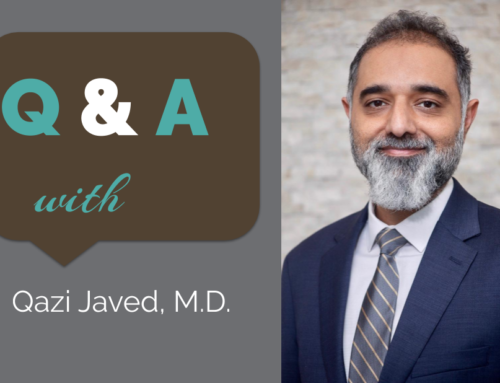John was very depressed. In therapy, he had not discovered anything moving about himself. One day, he was telling me about his daily routine. He would go to bed late at night watching Netflix and then would struggle to wake up in the morning. To wake himself up he would reach for his phone. He would turn on some music and check whether he had messages or not. He would then head over to Facebook and see if anyone had written anything pertaining to him in the six hours that he was asleep. After making sure of that, he then went over some videos, put a smiley here, a heart there, and several likes on some comments. He would start feeling a little more energetic as he would go through the most recent nail biting episode of being able to maintain his perfected projected self on Facebook. With a sigh of relief, that nobody had really figured the real him, he would dress quickly and be out of the door without having any breakfast. On his way to work he would make a brief stop at the drive through lane at the coffee shop. He would work all day and then after work, would barely get his dinner made and then crash in front of Netflix, unable to bear a whole day’s worth of thoughts of success and failures of his life. He would then immerse himself in thoughts of success and failure of other people on the TV screen till he fell asleep. And then he would dream.
There are various ways to explain the phenomenon of dreams, and there is no way to tell which one is “correct” or not. One which fits into my therapy work is that our dreams are a way of metabolizing the world. What we eat makes our body. What we see, hear, or smell makes up our thoughts. Throughout the day our organs are busy metabolizing the food that we eat. At night our bodies rest and our minds metabolize the world we live in during the daytime. Metabolism involves breaking down, absorbing, and owning. When we eat food, we break it down into its constituents and then it gets absorbed in our intestines. It then gets incorporated in our cells and we finally own the thing that has been eaten. It becomes a part of us. Similarly, what we see or hear gets broken down into discrete facts and emotions. It gets absorbed into our minds by creating a meaning and then it becomes a part of us as we merge it with our associations and build a narrative around it. For a lot of people, dream state is one of the only times they have access to their own original thoughts.
All through the day we think thoughts after being stimulated from outside of ourselves. Often times we sense a stimulus outside of us and then we think about it. What we think and the urgency with which we think it, is entirely dependent on factors outside us. We claim those thoughts as our thoughts but in reality they are not our own original thoughts. They are thoughts as an answer to someone else’s thoughts. In the daytime we are meeting other people’s needs, more than meeting our own needs. In the night, however, when we are dreaming, we are thinking thoughts that are arising from our own self. As we build associations and absorb the world outside, we reject all those things we feel are useless to us. This is why our most unresolved conflicts come to the forefront of our mind and want to be addressed at night. Each night, as those conflicts want to be resolved in our minds through dreaming, there is some hope that on waking up we will change something in our daytime lives to resolve that conflict in “real life.” We must listen to our dream life if want to know ourselves. Because that is one of the few ways we can listen to our own needs. Our creativity and inspiration come from the associations of our night life. In the mirror we see our bodies. In our dreams we see our thoughts.
During the early morning our impressions are keen. We have just woken up from ourselves. We are the most creative at that time. Our thinking is the most efficient at that time. A lot of people study during that time or do important work at that time. They have figured out that time runs differently early in the morning when few people are awake. Those who like getting up early in the morning love spending time with themselves. We all know people who cannot stop jogging early in the morning. We also probably know people who like to meditate in the morning. To access their own healing in the early morning hours, I encourage clients to keep a journal. Journaling is one way people can get comfortable with themselves and their thoughts. This is one of the ways that we can start building a healthy habit of looking at our thoughts without reacting. When we are asleep, we access our healing by dreaming. When we are awake we access our healing through awareness. Journaling fosters awareness in our own self. This leads to insight. This is an alternative to our usual habit of distracting ourselves, from ourselves, by creating one crisis after another.
Once John understood all of this, he decided to wake up early in the morning and not look at his phone for an hour. It was difficult. In the end he had to put his phone in a drawer and buy an alarm clock instead to wake him. After waking up, instead of getting on the train of thoughts inspired by his phone, he would look into himself. He started paying attention to his dreams and started journaling. After working on his dreams, his therapy progressed much more rapidly. He made some discoveries about himself which increased his belief in the work that he as doing in therapy. He felt that his dreams were potentially holding an answer he sought. His excitement at discovering new things about himself became therapeutic for him. It took some time, but he actually started looking forward to the morning time. Going to work became easier. He started eating breakfast. He started planning his days. He began to take an interest in himself and experiment with being a new version of himself. He was no longer living with a fossilized concept of himself, one that inevitably bred a low sense of self-esteem and depression. He told me one day, “In my dreams I can fly over obstacles. I am discovering how to do that in real life also.”
Note: There is no confidential information included in this article.






